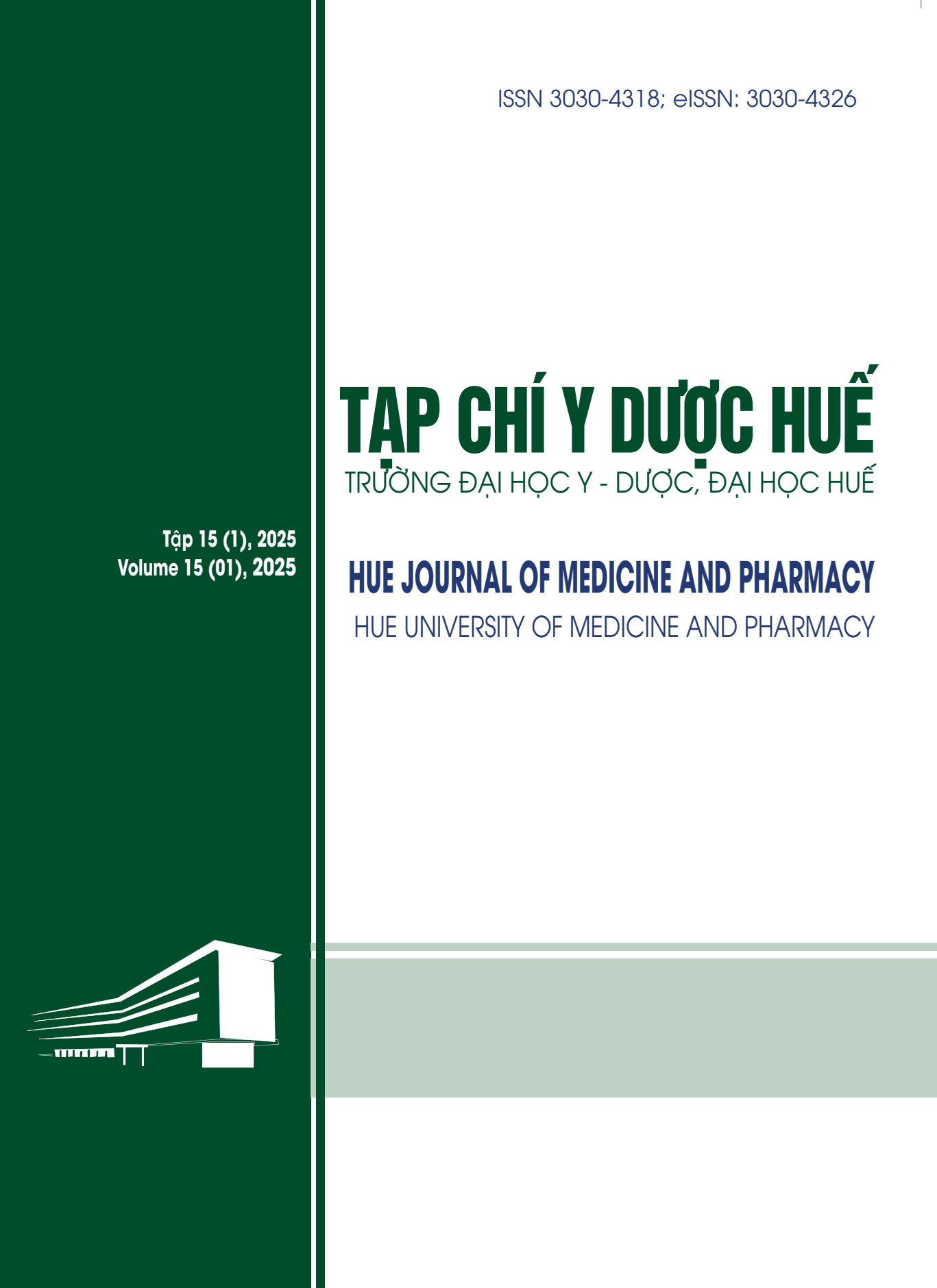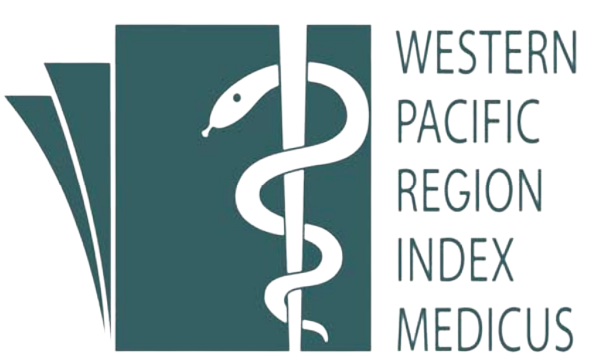Abstract
Background: This study aims to assess knowledge, attitude and practice of healthcare providers regarding drug-drug interactions (DDIs) at the commune health centers in Thua Thien Hue province and to examine the association between their practice and level of knowledge about DDIs.
Materials and Method: A cross - sectional descriptive study was conducted on 228 healthcare providers at the commune health centers in Thua Thien Hue province.
Results: The proportion of healthcare workers with limited knowledge about DDIs was 60.1%. Professional background and qualification were significantly associated with the knowledge of DDIs (p<0.05). Over 50% of physicians reported that DDIs warning influenced their prescribing decisions, making these resources valuable for future prescriptions. For the detection and prevention of DDIs. Regarding DDIs detection and prevention, 80.2% of healthcare workers regularly checked for DDIs in patient prescriptions. Knowledge level is associated with the practice of checking DDIs in prescriptions (p<0.05).
Conclusion: Primary care providers are not adequately equipped with sufficient knowledge to detect and manage potential DDIs in patients. This study highlights the urgent need to enhance training on DDIs for healthcare workers at the primary care to improve their ability to identify and manage DDIs, ensuring patient safety
| Published | 2025-04-24 | |
| Fulltext |
|
|
| Language |
|
|
| Issue | Vol. 15 No. 1 (2025) | |
| Section | Original Articles | |
| DOI | 10.34071/jmp.2025.1.6 | |
| Keywords | tương tác thuốc, chăm sóc ban đầu, sử dụng thuốc an toàn drug interactions, primary care, medication safety |

This work is licensed under a Creative Commons Attribution-NonCommercial-NoDerivatives 4.0 International License.
Copyright (c) 2025 Hue Journal of Medicine and Pharmacy
Moura CS, Acurcio FA, Belo NO. Drug - drug interactions associated with length of stay and cost of hospitalization. Journal of Pharmacy & Pharmaceutical Sciences. 2009; 12(3): 266-272.
Toivo TM, Mikkola JA, Laine K, Airaksinen M. Identifying high risk medications causing potential drug-drug interactions in outpatients: A prescription database study based on an online surveillance system. Research in Social and Administrative Pharmacy. 2016; 12(4): 559-568.
Kapp PA, Klop AC, Jenkins LS. Drug interactions in primary health care in the George subdistrict, South Africa: A cross-sectional study, South African Family Practice. 2013; 55(1): 78-84.
Yu Ko , Daniel C Malone, Grant H Skrepnek, Edward P Armstrong, John E Murphy, Jacob Abarca, et al. Prescribers' knowledge of and sources of information for potential drug-drug interactions: a postal survey of US prescribers. Drug-Safety. 2008; 31: 525 - 536.
Abdo MS, Hammad MA, Harun SN, Eusoff TM, Ghadzi SM. Evaluation of knowledge, attitude and practice of healthcare providers towards life-threatening drug-drug interactions in Penang General Hospital, Malaysia. Clinical Epidemiology and Global Health. 2020; 8: 1253–1258.
Nabovati E, Vakili-Arki H, Taherzadeh Z, Saberi MR, Abu-Hanna A, Eslami S. A survey of attitudes, practices, and knowledge regarding drug-drug interactions among medical residents in Iran. International Journal of Clinical Pharmacy. 2017; 39(3): 560-568.
Anrys P, Petit AE, Thevelin S, Sallevelt B, Drenth C, Soiza RL, et al. An International Consensus List of Potentially Clinically Significant Drug-Drug Interactions in Older People. J Am Med Dir Assoc. 2021; 22(10): 2121- 2133.e24.
Khaled A, Siddiqua A, Makki S. The Knowledge and Attitude of the Community from the Aseer Region, Saudi Arabia, Toward COVID-19 and Their Precautionary Measures Against the Disease. Risk Management and Healthcare Policy. 2020; 13:1825-1834.
F Catella-Lawson 1, M P Reilly, S C Kapoor, A J Cucchiara, S DeMarco, B Tournier, et al. Cyclooxygenase inhibitors and the antiplatelet effects of aspirin. The New England Journal of Medicine. 2021; 345(25): 1809-1817.
MacDonald TM, Wei L. Effect of ibuprofen on cardioprotective effect of aspirin. Lancet. 2003; 361(9357): 573-574.
Harris CL, Raisch DW, Abhyankar U, Marfatia S, Campbell HM, Sather MR. GI risk factors and use of GI protective agents among patients receiving nonsteroidal antiinflammatory drugs. Annals of Pharmacotherapy. 2006; 40(11): 1921-1931.
Fralick M, Macdonald EM, Gomes T, Antoniou T, Hollands S, Mamdani MM, et al. Co-trimoxazole and sudden death in patients receiving inhibitors of renin-angiotensin system: population based study. British Medical Journal. 2014; 349:g6196.
Bird PA, Strugess AD. Clinical ergotism with severe bilateral upper limb ischaemia precipitated by an erythromycin-ergotamine drug interaction. Australian and New Zealand Journal of Medicine. 2000; 30(5): 635-636.
Yu Ko, Daniel C Malone, Jerome V D'Agostino, Grant H Skrepnek, Edward P Armstrong, Mary Brown, et al. Potential determinants of prescribers' drug-drug interaction knowledge, Research in Social and Administrative Pharmacy. 2008; 4(4): 355-366.
Abbasi Nazari M, Salamzadeh J, Hajebi G, Gilbert B. The role of clinical pharmacists in educating nurses to reduce drug-food interactions (absorption phase) in hospitalized patients. Iranian Journal of Pharmaceutical Research. 2011; 10: 173-177.
Abbasi Nazari M, Hajhossein Talasaz A, Eshraghi A, Sahraei Z. Detection and management of medication errors in internal wards of a teaching hospital by clinical pharmacists. Acta Medica Iranica. 2013; 51: 482-486.






